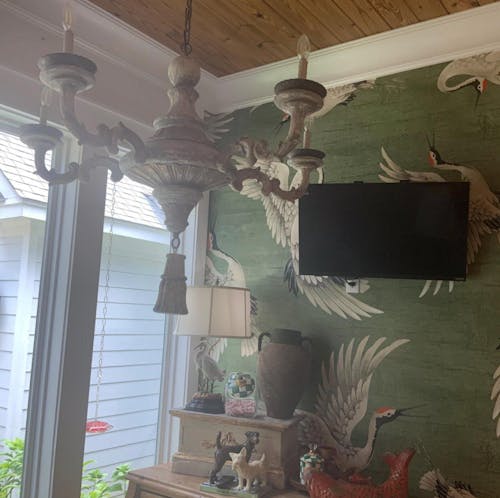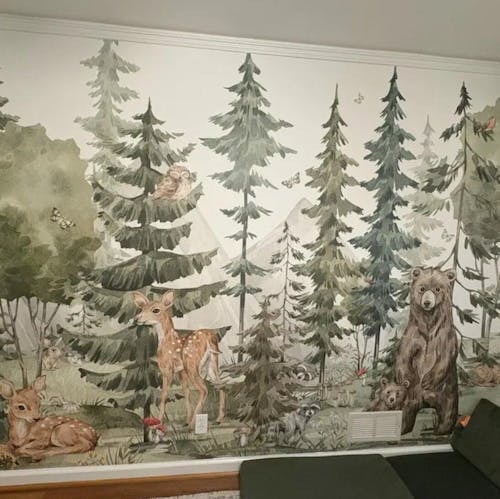Peel-and-stick wallpaper has revolutionized the world of interior design, offering a quick and hassle-free way to transform living spaces. However, despite its convenience, peel-and-stick wallpaper is not immune to wear and tear. From accidental tears to stubborn bubbles, maintaining the pristine appearance of your wallpaper may require occasional repairs. Understanding how to effectively address these issues can prolong the life of your wallpaper and ensure that your walls continue to showcase your unique style.
Assessing the Damage
Before beginning any repairs, it's crucial to thoroughly inspect the affected area of your peel-and-stick wallpaper. Take a close look at the surface, paying attention to any signs of damage or irregularities. Common issues include peeling edges, tears, bubbles, and creases. By pinpointing the nature of the damage, you can determine the most appropriate repair method and gather the necessary materials.
Gathering Materials
- Utility Knife: For precise cutting of the wallpaper and trimming excess material.
- Adhesive: Choose a high-quality adhesive suitable for use with peel-and-stick wallpaper.
- Smoothing Tool: Use a smoothing tool or squeegee to remove air bubbles and ensure proper adhesion.
- Spare Wallpaper: Keep extra rolls or scraps of the original wallpaper on hand for repairs.
- Clean Cloth or Sponge: Use a clean cloth or sponge to wipe down the surface and remove any debris before applying adhesive.
- Measuring Tape: To accurately measure the dimensions of the damaged area and cut replacement pieces accordingly.
- Scissors: Sharp scissors are useful for cutting wallpaper and adhesive-backed materials.
- Protective Gloves: Optional but recommended, especially if working with adhesive or sharp tools.
Repair Process
Repairing peel-and-stick wallpaper involves a systematic approach to ensure a seamless outcome. Follow these five simple steps to effectively repair damaged sections:
Step 1: Preparing the Surface
Before applying any adhesive or replacement pieces, it's crucial to prepare the surface properly. Use a clean cloth or sponge to wipe down the damaged area, removing any dust, dirt, or debris. Carefully peel away any loose or damaged sections of the wallpaper to create a smooth surface for repair.
Step 2: Cutting Replacement Piece
Measure the dimensions of the damaged area using a measuring tape. Double-check your measurements to ensure accuracy before cutting the replacement piece. Use scissors or a utility knife to cut a replacement piece of wallpaper that matches the size and shape of the damaged area.
Step 3: Affixing the Replacement Piece
Carefully affix the replacement piece to the damaged area. Align the replacement piece with the damaged section, ensuring a seamless fit. Use a smoothing tool or squeegee to gently press the replacement piece onto the wall, starting from the center and working outward. Press firmly along the edges of the replacement piece to ensure it adheres securely to the wall.
Step 4: Finishing Touches
Use the smoothing tool to remove any wrinkles or creases in the replacement piece. Wipe away any excess adhesive with a clean cloth or sponge to achieve a clean and polished finish.
Tips for Success
Repairing peel-and-stick wallpaper can be a straightforward process when approached with care and attention to detail. Here are some tips to ensure success:
Take Your Time: Rushing through the repair process can lead to mistakes. Take your time to assess the damage, gather materials, and execute each step methodically.
Work in a Clean Environment: Ensure the workspace is clean and free of clutter to prevent any additional damage to the wallpaper or hindrance to the repair process.
Use Sharp Tools: Sharp scissors and utility knives are essential for cutting precise replacement pieces and achieving clean edges. Dull tools can cause jagged cuts and make the repair process more challenging.
Practice Patience: Allow the adhesive to dry fully before smoothing out the replacement piece. Rushing this step can result in uneven adhesion and compromised durability.
Address Bubbles Promptly: If air bubbles form under the wallpaper during the repair process, gently lift the affected area and smooth them out using a smoothing tool. Ignoring bubbles can lead to unsightly imperfections in the finished repair.
Seek Professional Help for Complex Repairs: If the damage is extensive or you're unsure about tackling the repair yourself, don't hesitate to seek professional assistance. A trained professional can assess the damage and provide expert guidance on the best course of action.


















